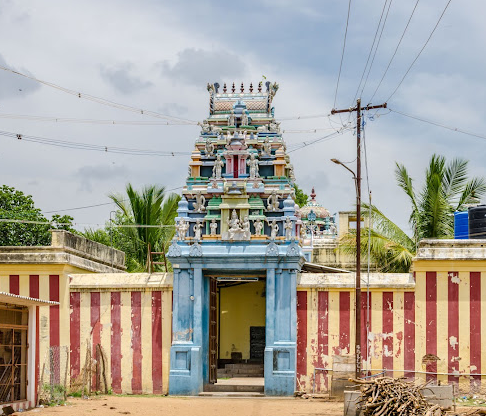The Muktheeswarar Temple, located in Sethalapathy, Tiruvarur District, holds great significance in Hindu mythology and is dedicated to Lord Shiva. The temple is tied to the story of Ravana's abduction of Sita. When Jatayu, the mighty bird, attempted to stop Ravana, he was slain. Before dying, Jatayu informed Lord Rama about Sita’s abduction. Lord Rama, deeply moved, performed Jatayu’s last rites as he passed away in Rama's lap. After completing his 14 years of exile and returning to assume the throne, Lord Rama visited this site to pay respects to his deceased father, King Dasaratha. He bathed in the Arasalar river, conducted a Shiva Puja, and offered "Pindam" for Dasaratha, performing the ritual of "Sirartham." In honour of Jatayu’s sacrifice, Lord Rama performed "Bidur Darpanam" with sesame seeds. Thus, the temple is named after Lord Shiva as "Muktiswarar," and the place is known as "Tiladarpanapuri," with "Tila" referring to sesame.
Administration History :
The temple has a long history of administration, with significant contributions from various dynasties. Originally built before the 7th century, it was later reconstructed during the Vijayanagara period. The Nattukottai Nagarathars took responsibility for renovating and maintaining the temple. Over the years, the temple has seen Maha Kumbhabhishekams conducted on 25th August 1999 and 8th July 2012. Presently, the temple is administered under the Velakurichi Adheenam (Thirupugalur).
